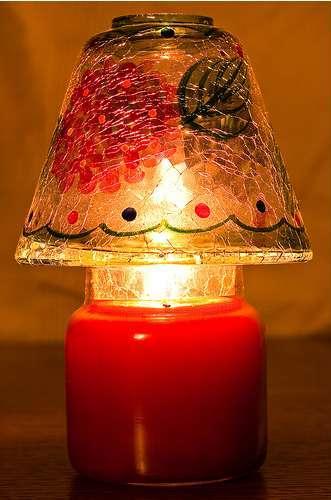FWP:
SETS
CANDLE: {39,1}
JALVAH: {7,4}
VEIL: {6,1}
S. R. Faruqi's choices. For more on Ghalib's unpublished verses, see the discussion in {4,8x}.
On the nature of a fānūs , see {39,1}.
The glass-shade of a candle both protects the candle (from wind, and from any too-close approach) and permits the candle's light to be visibly radiated (that is, the glass-shade is not opaque but transparent). The wing of a Moth can be a glass-shade only in a generalized metaphorical way-- but then, the same is true of the lover's heart. The operative quality seems in both cases to be the sense of both sheltering and diffusing the beloved's radiant beauty, at the cost of the lover's life.
The juxtaposed repetitions of par almost give an effect of fluttering. Compare {166,3}, with its different unorthodox use of the wing of the Moth.
Note for grammar fans: Obviously there are dodgy things going on with the grammar of chāhiye . The second line looks straightforward: X ko Y chāhiye , X needs Y. But of course that doesn't work very well semantically: it's not the candle-shade that needs the Moth's wing, but the candle. So we need to read ko as if it were ke liye , which is a permissible alternative and solves the problem. The first line offers X Y chāhiye . In isolation, that would be best read as 'X and Y are needed'. But that too doesn't work, in semantic terms. The most satisfactory way out of the problem is to take X and Y in apposition: 'an X which is a Y is needed'.

Asi:
The lover ought to be a veil for the glory/appearance of the beloved, and the radiant glory/appearance of his beloved ought to spread the way in which where there would be a candle, it is more proper for a glass-shade to be made from the wings of Moths.
== Asi, p. 233